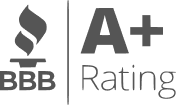Having a reserve at the end of the year is good for a nonprofit, especially since the cash flow of a nonprofit’s money substantially fluctuates throughout the year. A crucial question for nonprofit leaders and boards is: How much money should a nonprofit have in the bank? While the answer varies depending on the organization’s size, scope, and mission, general principles can guide decision-making.
However, how much money a nonprofit has in the bank doesn’t affect its 501c3 tax-exempt status but can affect its cash flow at times. What is crucial, and possibly puts the organization at risk, is where and when the funding you receive comes from. Tax-exempt status is granted to nonprofits with the understanding that the organization only exists to further its charitable goals. The goals or mission can be religious, support community needs, or advocate for other causes important to the founders.
Keep in mind also that a Nonprofit Line of Credit from Financing Solutions has been a valuable tool for many organizations that have uneven cash flow.
Summary
A Quick Insight into Nonprofit Financial Reserves
Financial reserves are funds set aside to ensure the organization can continue its operations during unexpected disruptions of financial flow. These reserves act as a financial cushion, helping nonprofits weather unforeseen challenges like economic downturns, funding cuts, or emergency expenses.
The Rule of Thumb: 3 to 6 Months of Operating Expenses
Many financial experts recommend nonprofits maintain reserves equivalent to three to six months of their operating expenses. This range provides a safety net without tying up too much capital that could otherwise be used for mission-critical activities. However, this rule is not a one-size-fits-all solution, as many factors can influence the financial reserve level.
Factors Influencing How Much Money a Nonprofit Should Have in The Bank
Revenue Stability
Nonprofits with steady, predictable revenue streams (e.g., membership fees or long-term grants) may require less in reserves. However, organizations relying on fluctuating sources, such as donations, event income, uneven federal or state reimbursements, should consider higher reserves. Having a nonprofit line of credit can greatly allow a nonprofit to reduce the amount of cash cushion needed allowing for or an emergency loan whenever needed.
Expense Predictability
For instance, fixed expenses, such as salaries and rent, necessitate a solid reserve. However, nonprofits with variable or seasonal expenses may adjust their reserve needs accordingly. It is actually illegal to miss or delay payroll and could cause your nonprofit to be closed down or to receive a hefty fine.
Mission and Programs
The type of mission and program are important when considering how much money a nonprofit should have in the bank.
Organizations providing essential services (e.g., food banks or shelters) often need higher reserves to ensure continuity during crises. On the other hand, advocacy or arts organizations with less urgent programming might manage with smaller reserves.
Growth and Expansion Plans
Nonprofits planning to expand operations or invest in new programs may need additional reserves to support these initiatives.
Steps to Building and Maintaining Reserves
Assess Current Financials
Calculate monthly operating expenses to determine a baseline financial reserve goal. Again, review cash flow patterns and funding cycles. Being good a budgeting is key to every successful nonprofit.
Set a Reserve Policy
Work with the board to define a clear reserve policy, including the target amount, acceptable uses, and replenishment plans.
Have a Funding Plan
Allocate surplus funds, fundraise specifically for reserves, or designate unrestricted donations for this purpose. Don’t be afraid to approach your largest donors asking for their donation to be considered an unrestricted donation. Many nonprofits are fearful of using donations outside of program funding but many donors do understand that paying your staff, rent and other organization expenses is important.
Monitor Regularly
Regularly review reserve levels as part of financial oversight in your board meetings. Remember, nothing is cast in stone, hence, you can adjust the reserve target as your organization’s needs and circumstances evolve and having everyone aware of expenses, income and cash flow helps monitor financial health.
How to Get Money for a Nonprofit
Cash from donations, grants, and fundraisers are all sources of nonprofit income. Its best to have a variety of income sources. The critical difference between income for a for-profit business and a nonprofit is that nonprofit income is used for the public interests outlined in the organization’s mission and not for private interests, like in a for-profit entity.
Where 501c3 organizations run into tax territory is with “Unrelated Business Income Taxation” or UBIT. UBIT is income received unrelated to the mission or charitable purpose of the nonprofit. For example, suppose the nonprofit has extra space in its building and rents to another tenant. In that case, the income derived is not related to the organization’s mission and is therefore considered taxable income. In this case, the profit is deemed to be taxable even if the income is used to support the organization’s mission. The Internal Revenue Service (IRS) keeps a close eye on what income the nonprofit labels as related and unrelated to the nonprofit’s mission and not necessarily what the 501c3 spends money on.
When there is related funding left over, it is up to the executive director, the board members, and the organization’s bylaws to decide how the extra money will be allocated.
Types of Nonprofit Funds
As we stated above, there is no limit to how much money a nonprofit can have in reserve. The key is in the organization’s financial management, whether that means reinvesting the reserve back into the nonprofit’s mission or ensuring financial security by saving money.
While a business has profits and losses, a nonprofit has a surplus or deficit. A nonprofit surplus means that the organization brought in more money at year-end than was spent, and a deficit indicates the budget goals of the organization were not met. Having a surplus is preferable to having a deficit, obviously, but a deficit doesn’t mean the organization has to sound the alarm bells. Most nonprofits experience income instabilities.
On the other hand, having a surplus has its concerns, mainly if it contains restricted funds. In a nonprofit, there are different kinds of restricted funds, such as:
Temporarily Restricted Funds: This includes grant funds usually reserved for a specific purpose or used at a particular time.
Permanently Restricted Funds: These are the endowments set aside so the nonprofit can benefit from the investment income.
Solicited Donations: These are the donations you solicit for a particular purpose or program and must only be used for the reason the money was collected.
What do nonprofits do with any extra money? Any surplus funds not earmarked for specific uses give the organization the additional monetary support it needs to achieve longevity and sustain the nonprofit’s mission.
Opening a Nonprofit Account
Whether the organization opens an account in a traditional bank or a nonprofit credit union, there are nonprofit bank account rules to keep in mind that protect the 501c3 tax-exempt status. These include:
Official documentation. Nonprofits apply at both the federal and state levels for tax-exempt status. They must show incorporation documentation, the organization’s Federal Tax ID Number, and the IRS Letter of Exempt Status. The bank may also ask for board meeting minutes, bylaws, or other organizational paperwork.
Signatures. Business bank accounts typically require two official signatures on the account. While a nonprofit is exempt from this rule, it’s usually a good idea that the person handling the finances is not the person who signs the checks. Also, record large expenses and deposits in the official meeting minutes.
Paper Trail. Nonprofits tend to get large donations, and banks are required by law to report any deposits over $10,000 to the IRS, no matter who or what type of business makes the deposit. Therefore, because nonprofits are highly regulated and under scrutiny, it’s important to maintain meticulous records and bookkeeping policies—especially when it relates to banking.
When choosing where to open an account, the best banks for nonprofits are the ones that understand the specific challenges facing nonprofits. Look for institutions that charge low (or no) fees if you have a low account balance. It’s also important to find a bank that offers retirement plans for nonprofit employees and financing options for nonprofits when they need extra money.
Money in the Bank
How much money a nonprofit has in the bank at year-end is a good indicator of the amount of income the organization raised and how well it handled expenses over the year. If the nonprofit has a surplus, procedures should already be in place for how to manage the reserve. If a vote is required for fund withdrawals, the Executive Director and Board members determine what the reserve will be used for. Remember, you should not use a reserve to cover long-term payroll shortages. Instead, nonprofit organizations should establish new programs or implement new strategies to support their mission. To keep its tax-exempt status, a nonprofit must use its funds to further its mission.
How Much Money Should a Nonprofit Keep in the Bank?
Determining exactly how much money a nonprofit should have in the bank depends on both short-term liquidity needs and long-term sustainability goals. As a general guideline, a healthy nonprofit should have enough readily available cash to cover at least three months of essential operating expenses—including payroll, rent, utilities, and program costs. This ensures that even if donations or grants are delayed, the organization can continue to meet its obligations without disruption.
However, some organizations—especially those dependent on seasonal fundraising or unpredictable government reimbursements—should aim for six to twelve months of cash reserves. This provides a stronger financial cushion and reassures board members, staff, and donors that the nonprofit is financially stable and capable of surviving unexpected downturns.
In addition to reserves, nonprofits should also keep a smaller operating balance in their checking account for day-to-day expenses, while placing the remainder in an interest-bearing savings or money market account. This approach keeps cash accessible while allowing the organization to earn modest returns.
When deciding on an appropriate cash balance, boards should consider historical cash flow trends, upcoming program commitments, and risk exposure. Nonprofits with lines of credit, such as those offered by Financing Solutions, can rely on those facilities for temporary cash flow needs—allowing them to keep a leaner bank balance without jeopardizing operations. Ultimately, a thoughtful reserve strategy signals fiscal responsibility and builds donor confidence, ensuring the nonprofit’s long-term mission can thrive.
Striking the Right Balance
While reserves are essential, nonprofits must also avoid hoarding funds unnecessarily. Accumulating excessive reserves can signal to donors and stakeholders that the organization is not fully utilizing resources to advance its mission. Transparency about reserve policies and their purpose can help maintain donor trust.
Financing Solutions Nonprofit Line of Credit
In the past, nonprofits have had difficulties getting a nonprofit loan or line of credit from a bank. Banks require collateral and personal guarantees, and for a nonprofit, those loan requirements can be complex and hard to achieve. Banks lending money to nonprofits is highly unusual.
Financing Solutions recognized this in 2012 and began offering a nonprofit line of credit that does not require collateral or personal guarantees. The business loans for nonprofits, in the form of a 501c3/not-for-profit line of credit, that Financing Solutions offers cost nothing to set up and nothing until used—making it an excellent cash backup plan. Financing Solutions has thousands of nonprofit clients throughout the U.S. who use their line of credit when cash flow slows and essential bills, such as payroll, must be paid.
If you would like a quote for a line of credit, please fill out our no-obligation 2-minute online nonprofit line of credit application. If your nonprofit has $200,000 per year in revenue, you will be qualified.




